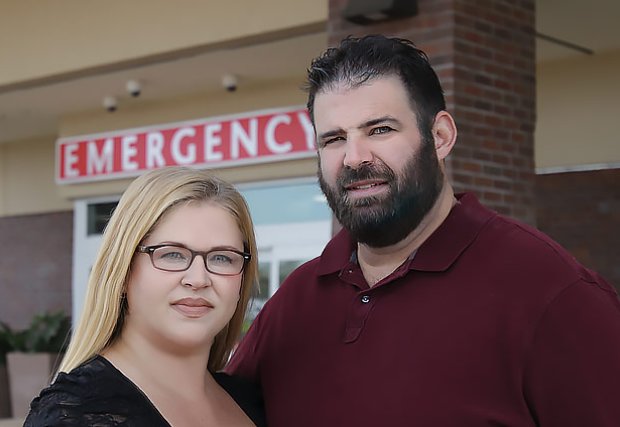Charlene and Harry Morck
On the evening of July 5, 2017, Harry Morck, 40, was watching a movie with his daughter when he noticed something wrong with his arm. He sent his daughter to get his wife, Charlene. “I checked on him and he was trying to tell me that something was wrong with his right arm, but he could not articulate it well,” she says. “I never paid attention to stroke symptoms and wasn’t even thinking of that. But when the 9-1-1 operator asked me a series of questions, it was evident he was having a stroke.”
Telemedicine — Making the Difference
When paramedics arrived, they were going to go to a local hospital, but Morck insisted he be taken to Corona Regional Medical Center. She had volunteered with a trauma intervention program associated with Corona Regional, so she felt better with him going there. “My husband was evaluated immediately and sent for a CT scan. Then a robot with a monitor was brought in, and Dr. Wengui Yu from UC Irvine Health was on the screen, reviewing my husband’s CT scan results,” says Morck. “Dr. Yu confirmed my husband had a stroke and authorized a clot-busting medication.” Once he was stabilized, Morck’s husband was transferred to UC Irvine Health for more specialized stroke care.
“I’m so glad we came to Corona emergency department. The staff was so quick, yet thorough, and the care my husband received was phenomenal! Their responsiveness truly saved his life,” says Morck. “We’ve been to Corona for other emergencies, but since they opened their new ER, the process has greatly improved, and it really has been such a positive change for the community!”
Morck states her husband had no further complications after his transfer to UC Irvine. “Because he received the clot-busting medication promptly, Harry’s rehabilitation is going well, and he is regaining mobility in his right arm. We are so grateful,” she says.
Stroke Telemedicine with UC Irvine Health
Thanks to an affiliation with UC Irvine Health, neurologists, neuro-interventionalists and neurosurgeons are available 24 hours a day to read diagnostic images in real time to quickly determine the type of stroke and the most effective plan of care. “I didn’t know Corona even had a stroke program, but I am glad to know now and would highly recommend this hospital,” says Charlene Morck.
Recognize These Signs of a Possible Stroke and Act FAST
FACE: Ask the person to smile. Does one side of the face droop?
ARMS: Ask the person to raise both arms. Does one arm drift downward?
SPEECH: Ask the person to repeat a simple phrase. Is it slurred or strange?
TIME: is critical! If you see any of these signs, call 9-1-1 immediately.

